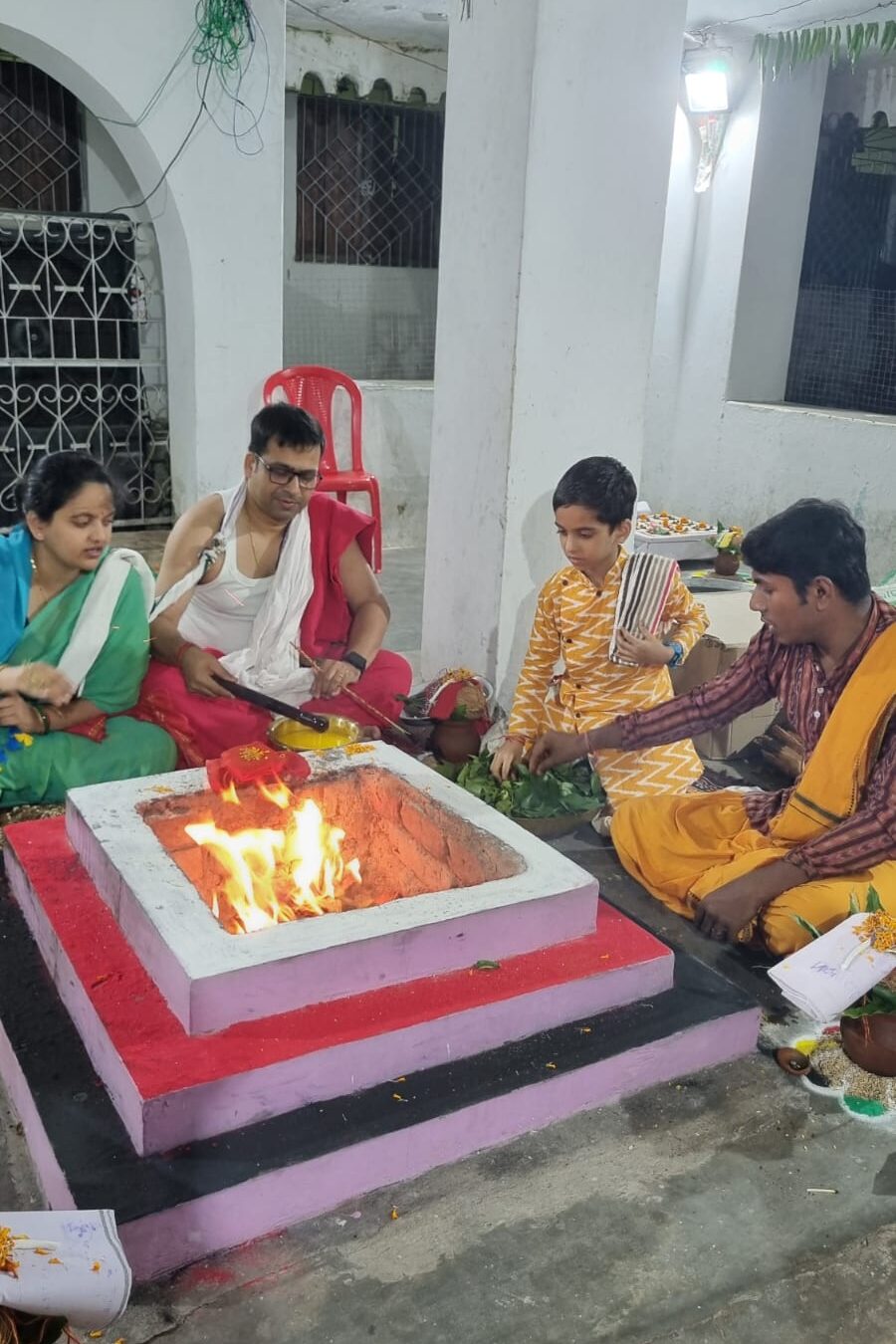Since childhood, October has always been synonymous with Durga Puja for me. Every vacation, my maternal cousins and I would gather—playing, gossiping, shopping, and getting swept up in the excitement of Bhai-Jutia, and later, the grand Ravana Podi. As kids, we even sold “tickets” to our grandparents, giving them exclusive access to the best viewing spots on the terrace for Ravana Podi! We would run around chasing the flying firecracker parachutes, with wide-eyed joy. Ah, the ’90s were pure magic!
But as the years rolled on, life happened. I went to college, started working, got married—and the madness of Durga Puja began to fade somewhere in that whirlwind. I didn’t even realize it slipping away. We cousins grew up, drifted apart, and got tangled in the balancing act of work and life. That’s just how life unfolds.
My maternal grandparents were deeply devoted worshipers of Maa Bhagawati and Maa Bindhyabasini, and perhaps, some part of that devotion still lingers in our family today. Now, in my 40s, I find myself being drawn back to spirituality and reflection. I realize that my childhood curiosity—those endless questions about the universe and rituals—planted seeds that are now blooming into a deeper understanding of spiritualism. Maybe, the strong Shakta traditions in my family shaped me in ways I never noticed until now.
This October of 2024, something truly special happened. My husband and I expressed our wish to serve as karta at the Bhagawati Mandir in Balangir during Sharad Navratri—and to our amazement, Maa Bhagawati, Maa Tara, and Bhairav Baba granted us that honor.
It’s humbling to realize how some forces pull us, drawing us closer without us even knowing. There were moments when I thought, “I became karta because I wanted to,” but the truth is—it wasn’t my choice. Maa Bhagawati called me this year, asking me to connect with her on a deeper level, to understand her essence better.

www.lifewithmypenguin.com
Becoming karta at a pitha (a sacred Shakti temple) is not an honor many people experience. My husband and I are immensely grateful for this blessing. But beyond the personal joy, I feel a growing urge for more people to truly understand the purity of our traditions, the beauty embedded in every ritual, and the strength they carry.
Interestingly, this deeper connection started stirring within me when I asked my content team to cover Cuttack’s Durga Puja celebrations this year. One of them casually remarked that Odia Durga Puja is just an extension of the Bengali tradition, limited only to Khanda Puja (sword worship). It left me unsettled. I couldn’t find anything in books or articles to disprove this statement, but my heart refused to accept it.
How can a land that holds the sacred Chaustathi Yogini temples of Hirapur and Jharial, and is home to two major Shakti Peethas—Vimala and Tara Tarini—not have its own distinct tradition of Durga Puja? How could my team, mostly Gen-Z though they are, be so unaware of Odisha’s rich cultural legacy? Why are they so quick to lose themselves in a Bengali narrative, unaware of the vibrant Shakta heritage that runs through our soil?
This journey feels like more than just a reconnection—it’s a calling to reclaim what’s ours, to rediscover our roots, and to carry forward the wisdom of our ancestors. And I believe, with Maa Bhagawati’s blessings, the path will become clearer.
